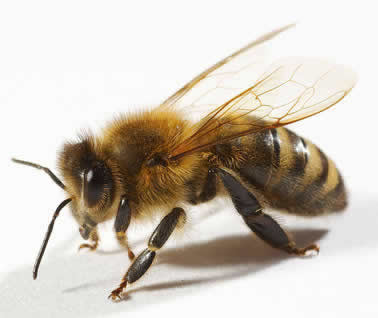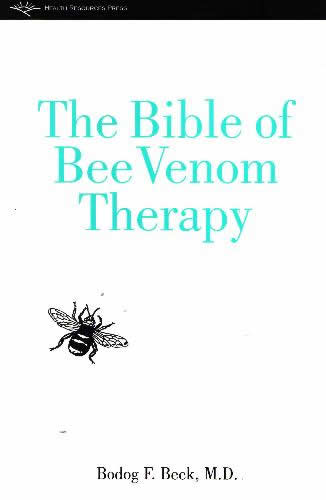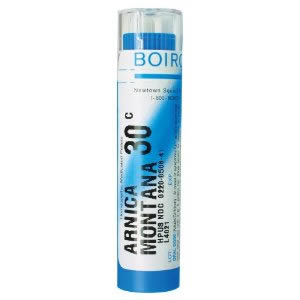Apitherapy is the use of bee products honey, bee pollen, royal jelly, propolis, and bee venom for healing. Which was first practiced in China, has developed as a popular alternative treatment throughout the world.
Apitherapy and Health Problems
According to the American Apitherapy Society, there are more than five hundred health problems that can be prevented or treated through the use of apitherapy, such as, skin conditions, allergies, cardiovascular diseases and arthritis. Dr Stefan Stangaciu, is one of the most important proponents of apitherapy and he states that he has had more than 7000 treatment successes with bee products. According to Dr Stangaciu, editor in chief of the International Federation of Beekeepers Association, apitherapy is, “the art and science of treatment and holistic healing through the honeybee and her products for the benefit of mankind and all the animal kingdom”.
Bee Pollen
Bee pollen is the pollen gathered from plants by honey bees, and brought back to their hive. Quality, color and texture vary considerably depending on location, environmental conditions and flower species. Bee pollen contains vitamins, minerals, amino acids, trace elements, enzymes and coenzymes, essential fatty acids enzymes, carbohydrates, carotenoids, bioflavonoids, phytosterols, beta-sitosterol, kaempferol, rutin and quercetin. Also, bee pollen provides a high content of the immune boosting RNA (ribonucleic acid) and DNA (deoxyribonucleic acid). DNA and RNA are important for health and longevity.
Bee pollen has a high level of iron in it, which helps to raise levels of iron and hemoglobin in the blood, fighting off conditions with anemia. Bee pollen helps to enhance red blood cells. In one animal-based study, bee pollen resulted in increases in hemoglobin and serum iron. In a study on humans, bee pollen and some Chinese herbs were found to increase the number of red blood cells. A study by Dr. Peter Hemuss, found an increase of gamma globulins among women receiving bee pollen to reduce the undesirable adverse effects of radiation treatment. Those who used the pollen demonstrated a higher level of immune system activity, less nausea and less hair loss than those who did not take bee pollen.
Royal Jelly
 Royal jelly is secreted by the hypopharyngeal gland bees, to feed young larvae and the adult queen bee. (Is secreted from the pharyngeal glands of worker bees between their sixth and twelfth days of life). It is produced in high amounts of in specially constructed cells, which develop into queen bee cells. The queen bee grows 42 % larger than the worker bee, lives 5 to 7 years and lays over 2000 eggs per day. Eating habits mean they become approximately twice the size and more than double the weight of other female bees, despite having no genetic advantage. Worker bees eating honey live only 4 to 6 weeks.
Royal jelly is secreted by the hypopharyngeal gland bees, to feed young larvae and the adult queen bee. (Is secreted from the pharyngeal glands of worker bees between their sixth and twelfth days of life). It is produced in high amounts of in specially constructed cells, which develop into queen bee cells. The queen bee grows 42 % larger than the worker bee, lives 5 to 7 years and lays over 2000 eggs per day. Eating habits mean they become approximately twice the size and more than double the weight of other female bees, despite having no genetic advantage. Worker bees eating honey live only 4 to 6 weeks.
In Russia and China, royal jelly was effective in treating chronic viral and bacterial infections, stomach ulcers, varicose veins and anorexia. A study conducted in Egypt in 1995 revealed that royal jelly was capable of killing several kinds of bacteria, including Escherichia coli (also called E. coli). 10-Hydroxy-2-Decenoic Acid (10-HDA) is a substance that young bees produce in their mandibular glands. Is known as an important active ingredient to fight viruses, bacteria and fungus. 10-Hydroxy-2-Decenoic Acid (10-HDA) makes up half of Royal Jelly fatty acid content and is an important criterion for the product’s potency and quality. 10-Hydroxy-2-Decenoic Acid comprises 2-15% of total weight of whole royal jelly.
Propolis
Propolis, also known as “bee glue” or “Russian penicillin”, is a sticky substance that bees make from tree and other plant resins. The chemical composition of propolis depends on the type of plants accessible to the bees. Approximately 200 different compounds have been identified so far in propolis. Flavonoids are abundant, including apigenin, kaempferol, galangin, luteolin, quercetin, pinocembrin and pinostrobin.
Preliminary studies suggest may be active against viruses, bacteria, and other microorganisms when applied topically. Bee propolis has been shown to fight bacterial strains that have become resistant to chemical antibiotics. The concentrations of flavonoids seem to be responsible for the important antibiotic effects. Bee propolis has the ability to directly destroy bacteria, viruses, fungi and penicillin-resistant staphylococcus. Australian scientists, showed that propolis increases the effectiveness of penicillin or other antibiotics from 10 to 100 folds.
Bee Venom Therapy
Bee Venom Therapy is the use of bee venom to treat diseases using a live bee or bee venom injection. Honeybee venom is produced by two glands associated with the sting apparatus of worker bees. Bee venom contains a diversity of peptides, including melittin, adolapin, apamin, the mast-cell-degranulating peptide, enzymes, biologically active amines, and nonpeptide components which have a variety of pharmaceutical properties.
Melittin, a 26-residue peptide, is the important component and activity unit of bee venom, exhibits highly and extensive biological action in anti-inflammatory, antiarthritis, analgesia, anti-radiation, anti-viral and antibacterial, as well as effect on heart-blood vessel. Bee venom contains a compound named apamin which enhances long term synaptic transmission and dopamine which helps increase motor activity.The most important characteristic of bee venom is the presence of the neurotransmitters serotonin,dopamine and norepinephrine, which along with the peptide apamin, facilitate nerve transmission and amelioration in conditions involving nerve disorders. This gives venom the capability to travel along neural pathways from the spine, to several trigger points, and injured areas to help repair nerve damage and restore mobility. Additionally bee venom contains a component known as adolapin, which is both anti-inflammatory and pain-blocking. Especially significant is bee venom’s stimulation on the adrenals through these substances, leading to the increase production of natural hormone cortisol, the major form of natural steroid use by the body, which has important effect in improving pain and immunity. Cortisol is produced by the adrenal gland and is known as the stress hormone.
Melittin causes the body to produce cortisol, which is an agent of the body’s own healing process. As an anti-inflammatory agent, melittin is 100 times more potent than hydrocortisone. That is why the bee venom therapy may be beneficial in treating inflammatory diseases such as rheumatoid arthritis.A team of researchers in South Korea performed an research into the molecular mechanisms behind bee venom’s therapeutic effect on rheumatoid arthritis, a chronic, inflammatory illness. The November 2004 edition of “Arthritis and Rheumatism” presents their insights into melittin, a important component of bee venom and a strong anti-inflammatory agent. Also, an analysis of studies by researchers from the “University of Exeter” found bee venom contained compounds that may alleviate joint pain. Christopher Kim (medical director of the Monmouth Pain Institute in Red Bank), who has administered apitherapy to 3000 people, reported a 2-year study on 108 osteoarthritis and rheumatoid patients who had not responded to standard therapies. Starting with twice-weekly injections, he gradually increased the number of shots until the participants developed significantly. Many patients demonstrated healing after an mean of 12 injections.
 Historically, bee venom was administered with live bees by stimulating them to sting in the affected area, trigger points or acupuncture points. Depending on the nature of the illness, the standardized venom can be used in a cream, ointment or liniment, injection form. Next to the effect of a live bee, injectable venom solution is considered to be a standard procedure to apply bee venom. The application of venom solution with ultrasonophoresis or electrophoresis is practiced in China and Europe.
Historically, bee venom was administered with live bees by stimulating them to sting in the affected area, trigger points or acupuncture points. Depending on the nature of the illness, the standardized venom can be used in a cream, ointment or liniment, injection form. Next to the effect of a live bee, injectable venom solution is considered to be a standard procedure to apply bee venom. The application of venom solution with ultrasonophoresis or electrophoresis is practiced in China and Europe. L-arginine is a precursor of different compounds (spermidine, spermine and putrescine) that are thought to play a role in sperm motility. A normal semen sample should have a volume of 1.5-5.0 ml, with greater than 20million sperm/ml. L-arginine is an amino acid necessary in the replication of cells, and is considered substantial for male fertility. Researches have shown arginine improves sperm count and motility. For infertile men with sperm counts greater than 10 million per milliliter, some physicians recommend up to 4 g of arginine per day for several months. In 1973, researchers reported a study in which L-arginine was given to 178 men with low sperm count. 74% of the participants had significant development in sperm count and motility after taking 4 g/day for 3 months. Another study, researchers evaluated the clinical efficacy of L-arginine in 40 infertile men. Participants were given 80 ml of a 10-percent arginine HCl solution for 6 months. L-arginine supplement significantly developed sperm motility without any adverse effects.
L-arginine is a precursor of different compounds (spermidine, spermine and putrescine) that are thought to play a role in sperm motility. A normal semen sample should have a volume of 1.5-5.0 ml, with greater than 20million sperm/ml. L-arginine is an amino acid necessary in the replication of cells, and is considered substantial for male fertility. Researches have shown arginine improves sperm count and motility. For infertile men with sperm counts greater than 10 million per milliliter, some physicians recommend up to 4 g of arginine per day for several months. In 1973, researchers reported a study in which L-arginine was given to 178 men with low sperm count. 74% of the participants had significant development in sperm count and motility after taking 4 g/day for 3 months. Another study, researchers evaluated the clinical efficacy of L-arginine in 40 infertile men. Participants were given 80 ml of a 10-percent arginine HCl solution for 6 months. L-arginine supplement significantly developed sperm motility without any adverse effects. The enzymes MMP1 and MMP13 are thought to play a important role in the cartilage and joint destruction and inflammation seen in rheumatoid arthritis and osteoarthritis. A laboratory experiment showed that a tincture prepared from arnica flowers and aqueous ethanol suppressed MMP1 (collagenase-1) and interstitial collagenase-13 (MMP13) mRNA levels in human articular chondrocytes. In a study, reported in the April 2007 issue of “Rheumatology International“, found that topical preparations of arnica montana were equivalent to ibuprofen drug in providing pain relief to sufferers of hand osteoarthritis. Participants were randomized to receive 5 percent topical ibuprofen or arnica gel three times daily for three weeks. (Patients could use acetaminophen if pain was unbearable). As a result, arnica was comparable in effect to ibuprofen with respect to hand functional capacity, pain intensity, number of painful joints, duration and severity of morning stiffness, and acetaminophen drug intake.
The enzymes MMP1 and MMP13 are thought to play a important role in the cartilage and joint destruction and inflammation seen in rheumatoid arthritis and osteoarthritis. A laboratory experiment showed that a tincture prepared from arnica flowers and aqueous ethanol suppressed MMP1 (collagenase-1) and interstitial collagenase-13 (MMP13) mRNA levels in human articular chondrocytes. In a study, reported in the April 2007 issue of “Rheumatology International“, found that topical preparations of arnica montana were equivalent to ibuprofen drug in providing pain relief to sufferers of hand osteoarthritis. Participants were randomized to receive 5 percent topical ibuprofen or arnica gel three times daily for three weeks. (Patients could use acetaminophen if pain was unbearable). As a result, arnica was comparable in effect to ibuprofen with respect to hand functional capacity, pain intensity, number of painful joints, duration and severity of morning stiffness, and acetaminophen drug intake.